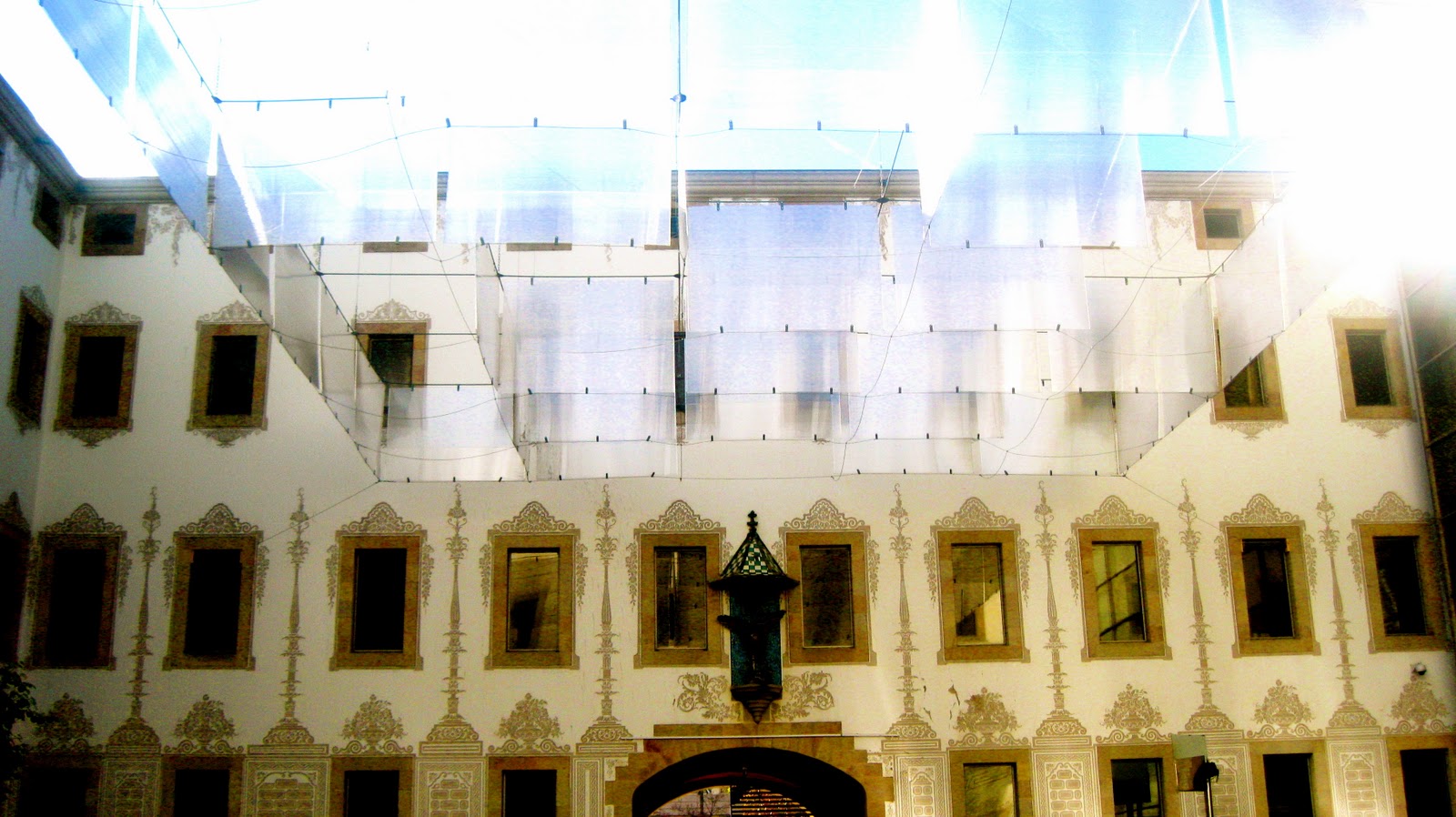September 27, 2010
For our third fieldtrip, we started off by the palace of music, a beautiful old theatre that is still in use today. From here we passed by a typical artisans workshop, as they go up they have decreasing windows. It was known that when people walked through the streets, girls would walk on the inside because people would throw their urine and waste out the window, and they would want to avoid it getting on the women. We walked by which used to be a monastery, but is now a market, with a curvy colorful rooftop. This building was rebuilt from the monastery times but the base was kept. Across the street from this was a newer, much uglier building that was done with no taste and lots of uniform windows. Another location of the Roman Ruins and the monastery remains, was known in the Middle Ages as the world of dreams. Each guild had its own sign outside the door which was made of iron. Then we headed to the stalk market for shepherds where we were in the Placa de la Llana, and here they established prices for wool. The windows on these buildings went from smaller to bigger in a descending order. One store called “Senegal” is owned by privileged people and you can tell this because there are 2 windows on the store, one in each corner. This was a sign of middle class people. The rich people left the dense area to go north. One project since the late 80’s was the renew buildings, which entailed buying an entire building and then reselling the flats. They would build furniture inside the house as well. On the main street, Carrer de la Princesa, buildings were demolished to widen the avenue, so when the Queen passed through she would not have to weave through the narrow streets. This main street is also a street that leads right down to the Picasso Museum.
Each guild had internships, and a minstrel was an official expert who would work three years with no salary to learn the trade. They would be paid with one pair of shoes per year, which was significant in those times. The trip ended with going to the courtyard where a middle class church was, along with the bricks overlaying tons of dead bodies. This church would be used for middle class weddings, and higher class weddings were held in the Catedral.





















